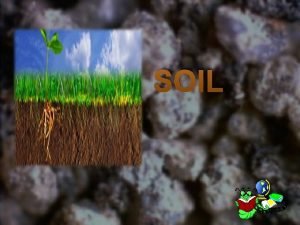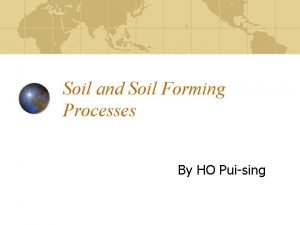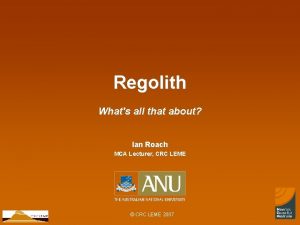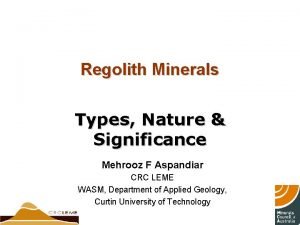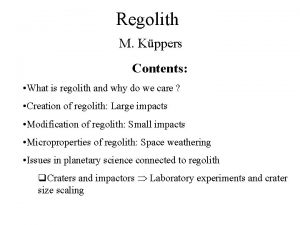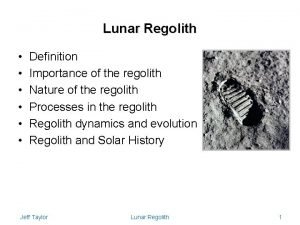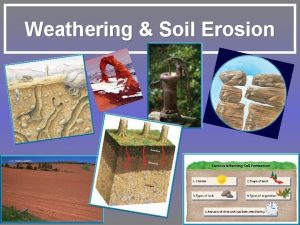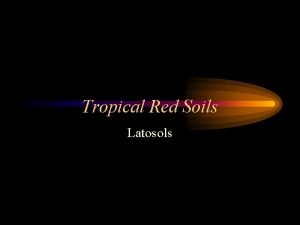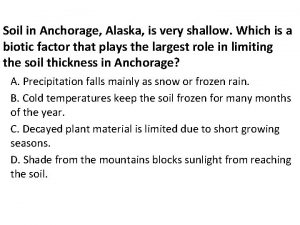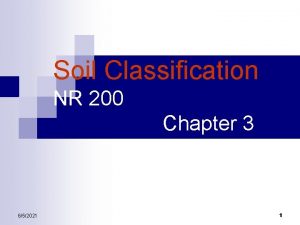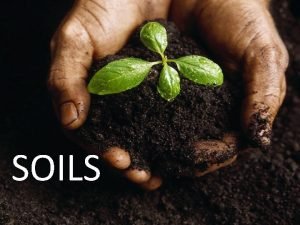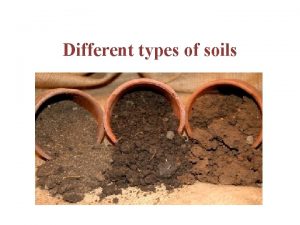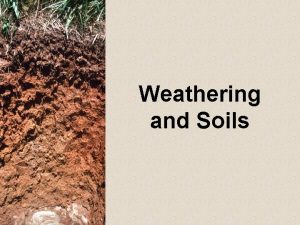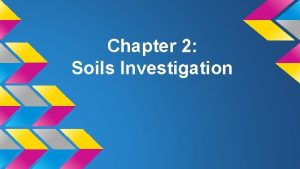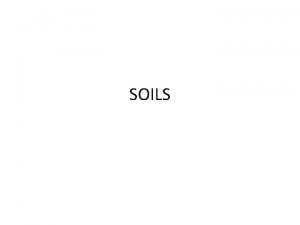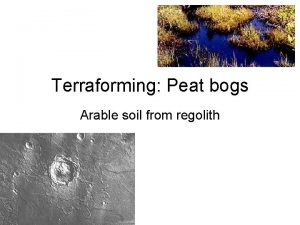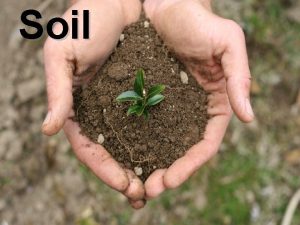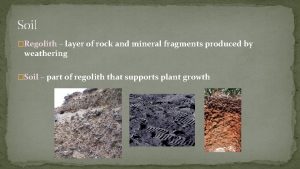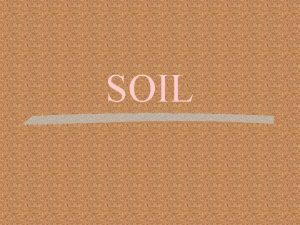Chapter 12 Soils Overview Soil Regolith Soil components














- Slides: 14

Chapter 12 Soils

Overview • • • Soil & Regolith Soil components Soil Properties & Chemistry

• Soil – infinitely varying mixture of weathered mineral particles, decaying organic matter, living organisms, gases, and liquid solutions • • Part of the outer “skin” of the earth Occupied by plant roots Thickness of soils varies depending on regional characteristics • Thin in the tropics, thicker in mid-latitudes • Generally thicker on flat land than on slopes Regolith – layer of broken and partly decomposed rock particles that covers bedrock


Soil Components • Inorganic materials • • Sand & silt • • • Approximately 45% of soil is inorganic Approximately 50% of soil is air (gas) and/or water Inorganic material is mostly minerals from rocks Largest size particles of soil Composes about half the volume of typical soils Clay • • Smallest sized particles of soil Too small to be seen with the naked eye


Soil Texture Triangle Loam – a relatively balanced soil containing roughly equal parts sand, silt, clay; most productive soil type for plants

• Organic materials – accounts for 5% of soil • Litter – collection of dead plant material • • Leaves, twigs, stalks, etc. Rate of decomposition varies depending on climate • • Faster in warm, humid regions Slower in cold and/or dry regions

• Organic Materials cont. • Humus – dark colored, gelatinous, chemically stable fraction of organic matter in the soil • • Results from the decomposition of plant material “black gold” for agriculture • • Catalyst for chemical reactions Reservoir for plant nutrients and soil water

Soil Chemistry • Chemical components of soils have a large influence plants productivity, as well as what types of plants can survive in in the soil • p. H of soils has a great influence as to the types of plants and productivity that can be seen in soils • • Generally speaking, plants are most productive in acidic soils Plants can grow in alkaline (salty) soils, but are usually small, grow slower, and not as productive as plants in acidic soils



Are the soils in the picture more likely to be acidic or alkaline?

Are the soils in the picture more likely to be acidic or alkaline?
 Bedrock
Bedrock Regolith soil horizon
Regolith soil horizon Eluviation and illuviation
Eluviation and illuviation Regolith geology
Regolith geology Mineral council australia
Mineral council australia Agglutination
Agglutination Lunar regolith definition
Lunar regolith definition Regolith
Regolith Iron core
Iron core The rate of weathering depends upon the area's ____.
The rate of weathering depends upon the area's ____. What are latosols
What are latosols Soil
Soil Anchorage soil
Anchorage soil Aridisols are soils characteristically found in _______.
Aridisols are soils characteristically found in _______. Continuous tubular rails
Continuous tubular rails
